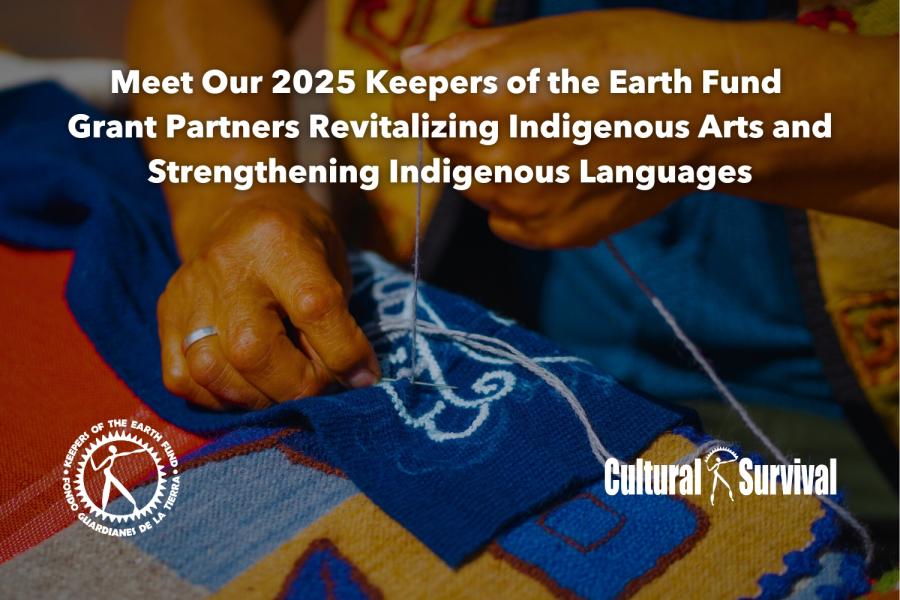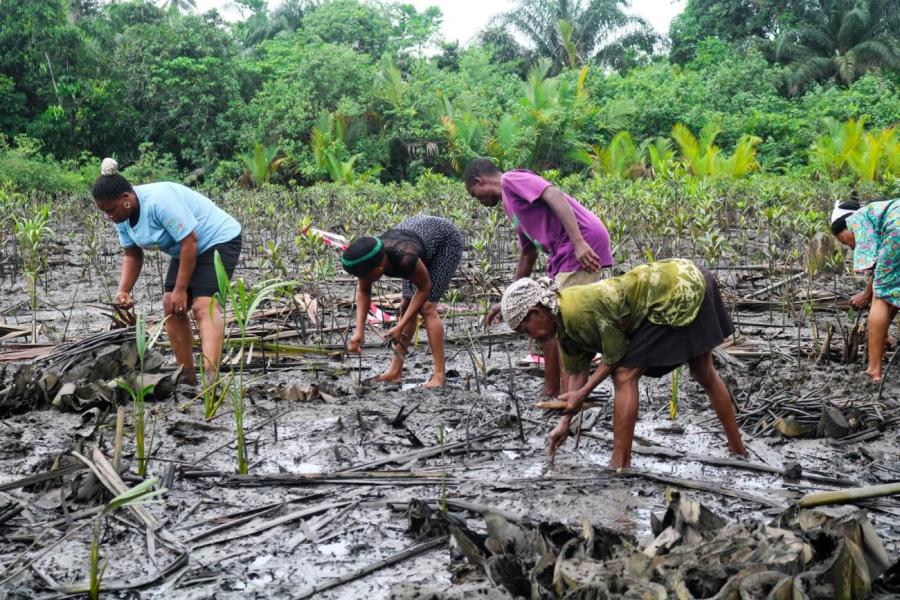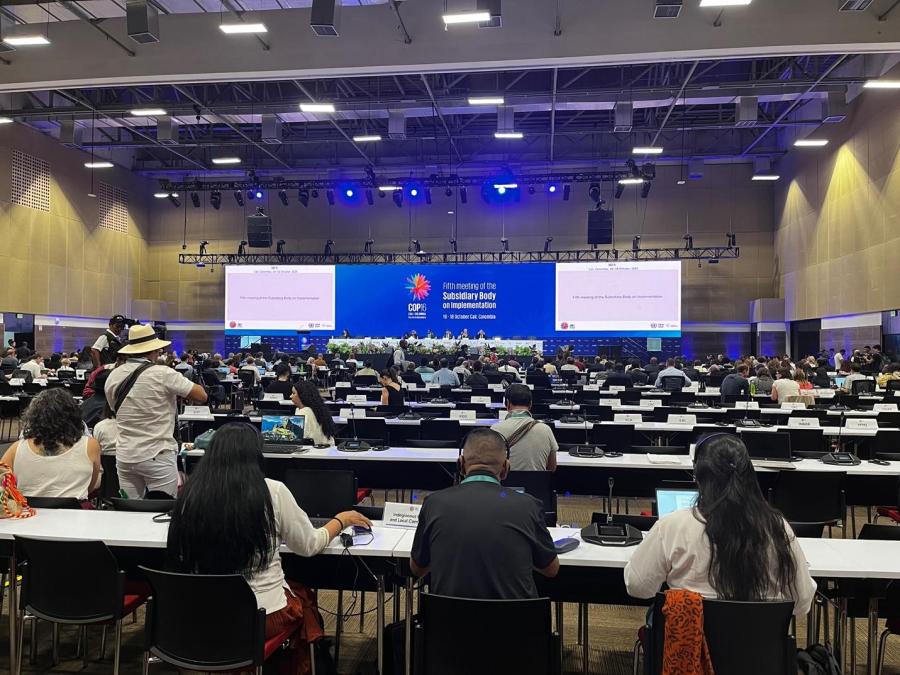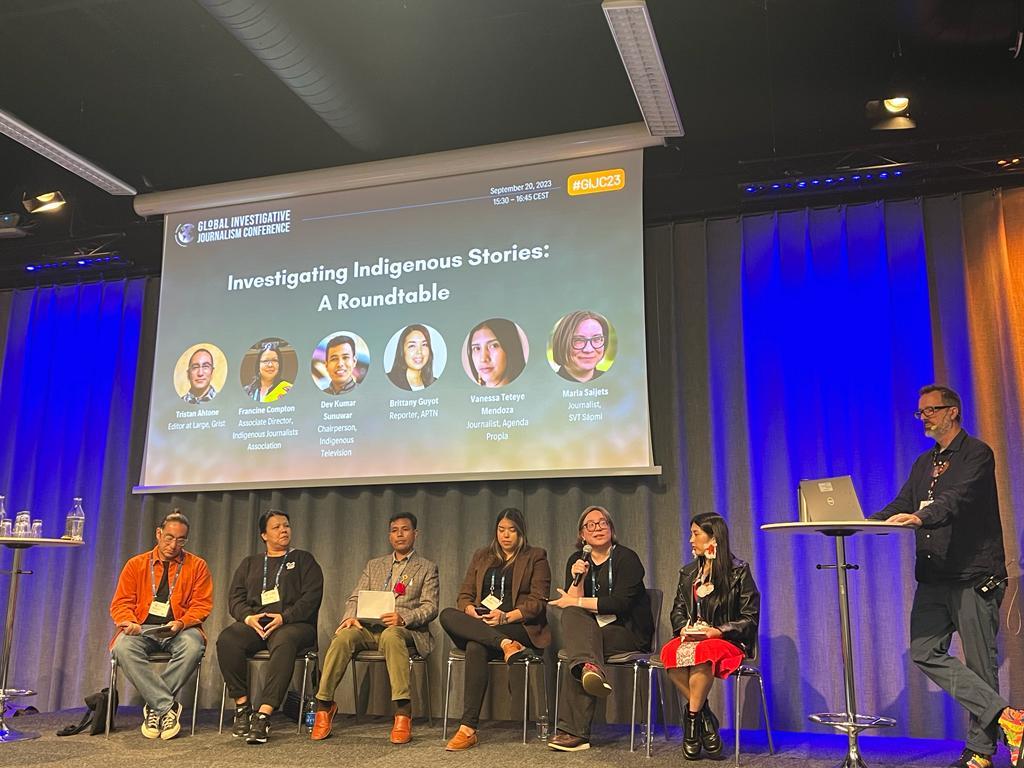
By Dev Kumar Sunuwar (Koĩts-Sunuwar, CS Staff)
I felt anxious and overwhelmed walking into the 13th Global Investigative Journalism Conference, which took place on September 19-22, 2023 in Gothenburg, Sweden, since, for the past 20 years, I have been working in a small, Indigenous-led media outlet focused on the tiny spheres of Indigenous Peoples' lands and territories in Nepal, usually only equipped with a voice recorder or mini-camera along with a pen and diary to tell stories of Indigenous Peoples’ issues and rights violations.
This year’s Global Investigative Journalism Conference was attended by 2,138 investigative journalists, reporters, and editors from 132 countries, making it the largest gathering of investigative journalists in history. The conference focused on practical and advanced reporting training including the latest tools and techniques, extensive networking, and brainstorming sessions, with over 200 sessions. The Indigenous Journalists Association, together with the Global Investigative Journalism Network, brought Indigenous journalists to be part of the conference. Still, there were only 15 Indigenous journalists in attendance, from Taiwan, Nepal, Canada, the U.S., New Zealand, Finland, Guatemala, and Colombia.
Despite the different geographies and cultures represented at the gatherings, the similarities in the impacts of racism, colonization, land grabbing, and forced displacement of Indigenous Peoples, among others, weaved together all of our stories. The coverage of such violations is extremely limited. If Indigenous Peoples’ issues or rights violations are covered at all, they are not always properly or positively portrayed. The panel, “Investigating Indigenous Stories,” discussed the importance of Indigenous stories and the time needed to create them, which is not understood by many newsrooms.
Brittany Guyot (Northlands Dënesųłiné First Nation), an investigative reporter with APTN Investigates in Canada, said on the panel, “In Canada, Indigenous people are far more likely to go missing or be murdered compared to the non-Indigenous populations. In the last three months alone, there have been approximately three women whose remains have been found in local landfills. The issue that we’re having now is recovering their remains and returning them to their families so that they can have proper ceremonies. If it were a non-Indigenous person whose remains were found in a dump or [the] garbage, the government would make every effort to recover those people.”
Guyot, who has long been reporting on the deaths of Indigenous children at residential schools, as well as the overrepresentation of Indigenous people in the criminal justice system, reflected on the bitter reality of these stories being ignored by the mainstream media: “Such issues have not been in a national conversation nor covered well enough by the media. I think it's incredibly important that we have Indigenous journalists at the decision-making level of the newsroom to be able to tell these stories. Sadly, we don't have adequate [numbers of] Indigenous journalists in Canada, especially Indigenous women, who are in investigative journalism. We need more Indigenous investigative journalists who can tell such sensitive stories best,” she said.
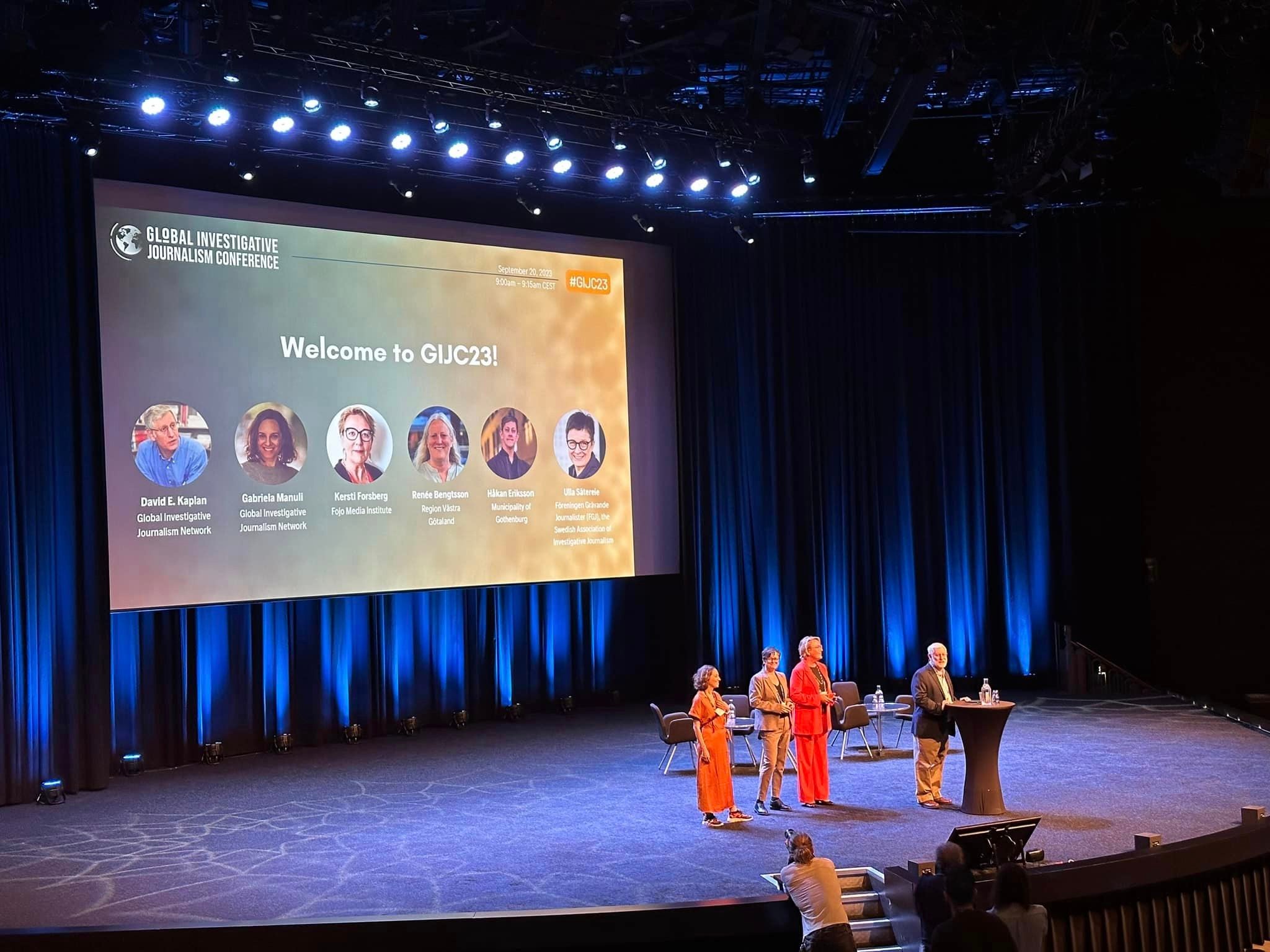
Panelists concurred that more Indigenous journalists in newsrooms would create better representation and serve the needs of society. Historically, the media coverage of Indigenous Peoples has tended to focus on the negative and is dominated by non-Indigenous voices. Therefore, strong voices are needed in favor of decolonizing and Indigenizing the media to better reflect Indigenous voices.
“In the U.S., there are several things that impact Indigenous Peoples—economy, land grabbing, health care—[that] receive little or no coverage in the media, primarily because reporters don't find those stories particularly important. And there are no signs of such an attitude going away anytime soon. A few places have started Indigenous affairs desks to deal with this problem, but most of them are at small nonprofit outlets or public radio stations. We don't see this at large organizations or mainstream organizations,” said Tristan Ahtone (Kiowa), editor at large at Grist. “I believe the easiest thing to do is hire Indigenous journalists to work in your newsroom. But if you can't hire an Indigenous journalist, you can collaborate and work with other Indigenous reporters at other news outlets. There are many, many ways that you can safeguard your work, safeguard your journalism, and make sure that you're doing the best work possible,” Ahtone said.
Investigative journalism is not simply about making hidden facts or secrets public. It should also focus on social justice and accountability and aim to right the wrongs and protect the most vulnerable groups of society, making those in power accountable to them. But lately, investigations have been primarily focused on covering crime and corruption. Most media is controlled by the power, money, and stories of the dominant group of society.
Even so, Indigenous journalism is on the rise. Indigenous journalists and Indigenous media outlets are leading the way in telling our stories and increasingly demonstrating to the non-Indigenous media how this coverage can and should be done in response to centuries of inadequate reporting, systemic misinformation about Indigenous communities, and a dearth of coverage that perpetuates Indigenous Peoples’ invisibility.
“We need more journalists and more media organizations who can listen to Mother Earth and storytellers who pay attention to the issues affecting Indigenous Peoples and consider Mother Earth a character who feels what is happening and has something to tell,” said Vanessa Teteye Mendoza, (Bora-Uitoto) from La Chorrera, Amazonas, Colombia, from the Iñeje (Canangucho) clan. Mendoza works at the independent intercultural media agency Agenda Propia, where she has reported on and served as an editorial advisor for various stories, especially on the struggles and realities of Amazonian Peoples.
In Scandinavian countries, the mainstream media has given scant attention to covering the stories of reindeer herders, the Sami Peoples living in Norway, Sweden, Finland, and Russia. “The climate crisis has already resulted in consequences on our livelihoods, and our lives. The extractive industries, electrification, and industrialization have caused devastating impacts. Sami people are also struggling to keep up their language and culture. There has been an increasing threat to the safeguarding of lands. The mineral and mining industries are booming on lands that the Sami people have been inhabiting for generations without the free prior and informed consent of the Sami people but are hardly covered by the mainstream news,” said Maria Sayet (Sami), executive producer at Sameradion and SVT Sapmi in Kiruna, Sweden.
“Coming from Sami society and knowing the problems that Sapmi, or the reindeer herders, have been facing, we should not be the only ones reporting on how Indigenous Peoples are struggling or fighting and surviving, in my opinion. It is also the mainstream media that has to take responsibility for covering Indigenous stories and their problems because Sami people are also part of the bigger communities, part of the countries, a part of the world population,” Sayet said.
In Japan, recognized Ainu Indigenous Peoples have not been able to hunt deer, fish for salmon, or practice their culture and rituals in the rivers or forests near where they live. In the Philippines, Kankanaey-Igorot Indigenous Peoples in the Cordillera Region have been struggling against the injustices of large-scale corporate gold mining for more than a century. In Malaysia, India, and Nepal, Indigenous Peoples are facing constant threats and have been struggling as their customary land, territories, and forests are transformed into protected areas or the rivers that they have collectively stewarded for generations have become hubs for hydro dams. But these issues are rarely covered in the news.
Associate Director of IJA, Francine Compton (Sandy Bay Ojibway First Nation), summarized the feeling of Indigenous journalists attending the conference: “The mainstream media does not report accurately on Indigenous issues. Therefore, the work of Indigenous investigative journalism in Indigenous issues is needed more than ever, as their freedom of information is getting worse than ever.”
